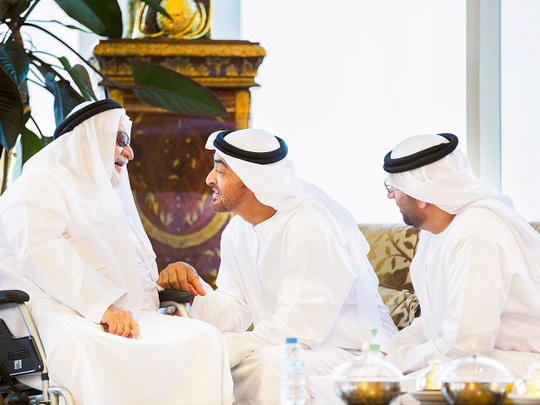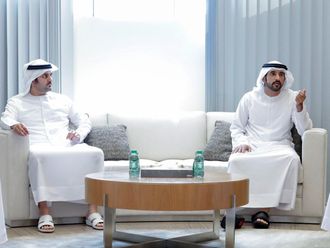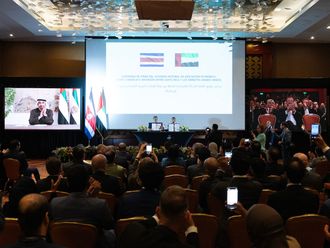
Abu Dhabi: Abu Dhabi on Monday marked the 50th anniversary of the Executive Council — the first government that helped to shape Shaikh Zayed Bin Sultan Al Nahyan’s vision for the emirate’s future.
In 1966, after establishing the framework of Abu Dhabi’s government, Shaikh Zayed, the founding father of the UAE, tasked the government with drawing up the emirate’s first five-year plan.
The government worked with Shaikh Zayed on the first five-year master plan for the emirate which would pave the way for the new Abu Dhabi Plan some 50 years later.
The Dh2.4 billion comprehensive plan looked at an economic future and set out to establish the basic infrastructure that was needed, said Dr Zaki Nusseibeh, cultural adviser in the Ministry of Presidential Affairs.
He said Abu Dhabi was a developing village, which had no roads, no electricity, no water. There was only one school in Abu Dhabi, one clinic in Al Ain and there was one hotel in Abu Dhabi.
Dr Nusseibeh worked with the founding father as the first ambitious master plan focused on investing in education, health and culture to bring the modern world to Abu Dhabi.
The plan also put the emirate’s infrastructural projects in place, including roads, an airport and a harbour.
Dr Nusseibeh said the plan was initially met with scepticism, recalling a meeting a British documentary team had held with Shaikh Zayed in 1968 to speak about his plans and what he wanted to do in Abu Dhabi. “The producer said as he came out from the meeting, ‘the man was dreaming, how can he achieve all this’?”
However, the first government of the emirate went far beyond the plan. It built internal roads, a network of roads to link Abu Dhabi to Al Ain, an airport, schools, clinics, and a harbour.
Fifty years on, Abu Dhabi is now established on the world scene as a political power base with an advanced infrastructure that rivals any in the world and aims to achieve Abu Dhabi’s vision in maintaining a safe and secure society and building a sustainable, diversified and globally open economy.
Abu Dhabi Executive Council said the Abu Dhabi Plan — which is aimed at keeping the emirate on track towards its Economic Vision 2030 — was a reflection of Shaikh Zayed’s legacy, and a blueprint for Abu Dhabi’s growth and development.
This plan serves as a transitional step towards ensuring that the Abu Dhabi government achieves the emirate’s vision, through specifying priorities and solving the challenges faced today.
The plan also provides a strong push towards excelling in government work and coordinating all efforts towards meeting the objectives established by the plan.
Abu Dhabi has also invested heavily in the past few years to support diversification policies, which is a positive indicator and clear evidence that the development journey is ongoing despite any urgent or new challenges that might be faced.
The latest plan continues and honours the legacy that began 50 years ago with Shaikh Zayed, whose first instructions as the Ruler of Abu Dhabi stated that the work of government should be aligned with the actual needs of the country and the people.












